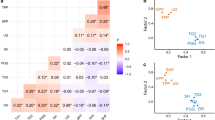Abstract
The social research about group decision-making in the human societies has received recent contributions from studies reached in the field of ethology and Game theory. Comparative data revealed the adoption of symbolic systems for vote expression and the consensus achievement in other social species. The wide diffusion of the voting procedure—as a sign of an ecological rationality– in species with different social organizations and cognitive levels, requires a new interpretation of the consensus issue assuming a new evolutionary biopolitical perspective, for the survey of the sociality and in particular of the effects of linguistic rationality on the human group decision-making .
Similar content being viewed by others
References
Black, J.M. 1988. Preflight signalling in swans: A mechanism for group cohesion and flock formation. Ethology 79(2): 143–157.
Boinski, S. and A.F. Campbell. 1995. Use of trill vocalizations to coordinate troop movement among white-faced capuchins: A second field test. Behaviour 132(11): 875–901.
Bousquet, C.A., D.J. Sumpter, and M.B. Manser. 2011. Moving calls: A vocal mechanism underlying quorum decisions in cohesive groups. Proceedings of the Royal Society of London B: Biological Sciences 278(1711): 1482–1488.
Conradt, L. and C. List. 2009. Group decisions in humans and animals: A survey. Philosophical Transactions of the Royal Society of London B: Biological Sciences 364(1518): 719–742.
Conradt, L. and T.J. Roper. 2003. Group decision-making in animals. Nature 421(6919): 155–158.
Conradt, L. and T.J. Roper. 2005. Consensus decision making in animals. Trends in Ecology and Evolution 20(8): 449–456.
Conradt, L. and T.J. Roper. 2007. Democracy in animals: The evolution of shared group decisions. Proceedings of the Royal Society of London B: Biological Sciences 274(1623): 2317–2326.
Conradt, L. and T.J. Roper. 2010. Deciding group movements: Where and when to go. Behavioural Processes 84(3): 675–677.
Corballis, M.C. 2002. From hand to mouth: The origins of language. Princeton: Princeton University Press.
Couzin, I.D., J. Krause, N.R. Franks, and S.A. Levin. 2005. Effective leadership and decision-making in animal groups on the move. Nature 433(7025): 513–516.
Crockford, C., R.M. Wittig, R. Mundry, and K. Zuberbühler. 2012. Wild chimpanzees inform ignorant group members of danger. Current Biology 22(2): 142–146.
Cronin, A.L. 2012. Consensus decision making in the ant Myrmecina nipponica: House-hunters combine pheromone trails with quorum responses. Animal Behaviour 84(5): 1243–1251.
da Cunha, R. G. T. and Byrne, R. W. 2009. The use of vocal communication in keeping the spatial cohesion of groups: intentionality and specific functions. In South American primates: Comparative perspectives in the study of behavior, ecology, and conservation, 341–363.
Dornhaus, A., N.R. Franks, R.M. Hawkins, and H.N.S. Shere. 2004. Ants move to improve: Colonies of Leptothorax albipennis emigrate whenever they find a superior nest site. Animal Behaviour 67(5): 959–963.
Fedurek, P. and K.E. Slocombe. 2011. Primate vocal communication: A useful tool for understanding human speech and language evolution? Human Biology 83(2): 153–173.
King, A.J. and C. Sueur. 2011. Where next? Group coordination and collective decision making by primates. International Journal of Primatology 32(6): 1245–1267.
Kummer, H. 1968. Social organization of hamadryas baboons, vol. 89. Chicago: University of Chicago Press.
List, C. 2004. Democracy in animal groups: A political science perspective. Trends in Ecology & Evolution 19(4): 168–169.
Norton, G.W. 1986. Leadership decision processes of group movement in yellow baboons. In Primate ecology and conservation, ed. J.G. Else, and P.C. Lee, 145–156. Cambridge: Cambridge University Press.
Pennisi A. 2014. L’errore di Platone, Biopolitica, linguaggio e diritti civili in tempo di crisi. Il Mulino.
Pratt, S.C., E.B. Mallon, D.J. Sumpter, and N.R. Franks. 2002. Quorum sensing, recruitment, and collective decision-making during colony emigration by the ant Leptothorax albipennis. Behavioral Ecology and Sociobiology 52(2): 117–127.
Pratt, S.C. 2005. Behavioral mechanisms of collective nest-site choice by the ant Temnothorax curvispinosus. Insectes Sociaux 52(4): 383–392.
Prins, H. 1996. Ecology and behaviour of the African buffalo: Social inequality and decision making. Berlin: Springer.
Schel, A.M., S.W. Townsend, Z. Machanda, K. Zuberbühler, and K.E. Slocombe. 2013. Chimpanzee alarm call production meets key criteria for intentionality. PLoS ONE 8(10): e76674.
Seeley, T.D. 2010. Honeybee democracy. Princeton: Princeton University Press.
Seeley, T.D. and S.C. Buhrman. 1999. Group decision making in swarms of honey bees. Behavioral Ecology and Sociobiology 45(1): 19–31.
Seeley, T.D. and P.K. Visscher. 2004. Quorum sensing during nest-site selection by honeybee swarms. Behavioral Ecology and Sociobiology 56(6): 594–601.
Sellers, W.I., R.A. Hill, and B.S. Logan. 2007. An agent-based model of group decision making in baboons. Philosophical Transactions of the Royal Society of London B: Biological Sciences 362(1485): 1699–1710.
Slocombe, K.E. and K. Zuberbühler. 2007. Chimpanzees modify recruitment screams as a function of audience composition. Proceedings of the National Academy of Sciences 104(43): 17228–17233.
Stewart, K.J. and A.H. Harcourt. 1994. Gorillas’ vocalizations during rest periods: Signals of impending departure? Behaviour 130(1): 29–40.
Sueur, C., J.L. Deneubourg, and O. Petit. 2010. Sequence of quorums during collective decision making in macaques. Behavioral Ecology and Sociobiology 64: 1875–1885.
Sumpter, D.J. and S.C. Pratt. 2009. Quorum responses and consensus decision making. Philosophical Transactions of the Royal Society of London B: Biological Sciences 364(1518): 743–753.
Tomasello, M. 2008. Origins of human communication. Cambridge: MIT Press.
Visscher, P.K. 2007. Group decision making in nest-site selection among social insects. Annual Review of Entomology 52: 255–275.
Author information
Authors and Affiliations
Corresponding author
Rights and permissions
About this article
Cite this article
Pennisi, A., Giallongo, L. Animal Biopolitics: How Animals Vote. Int J Semiot Law 31, 491–499 (2018). https://doi.org/10.1007/s11196-018-9560-2
Published:
Issue Date:
DOI: https://doi.org/10.1007/s11196-018-9560-2




